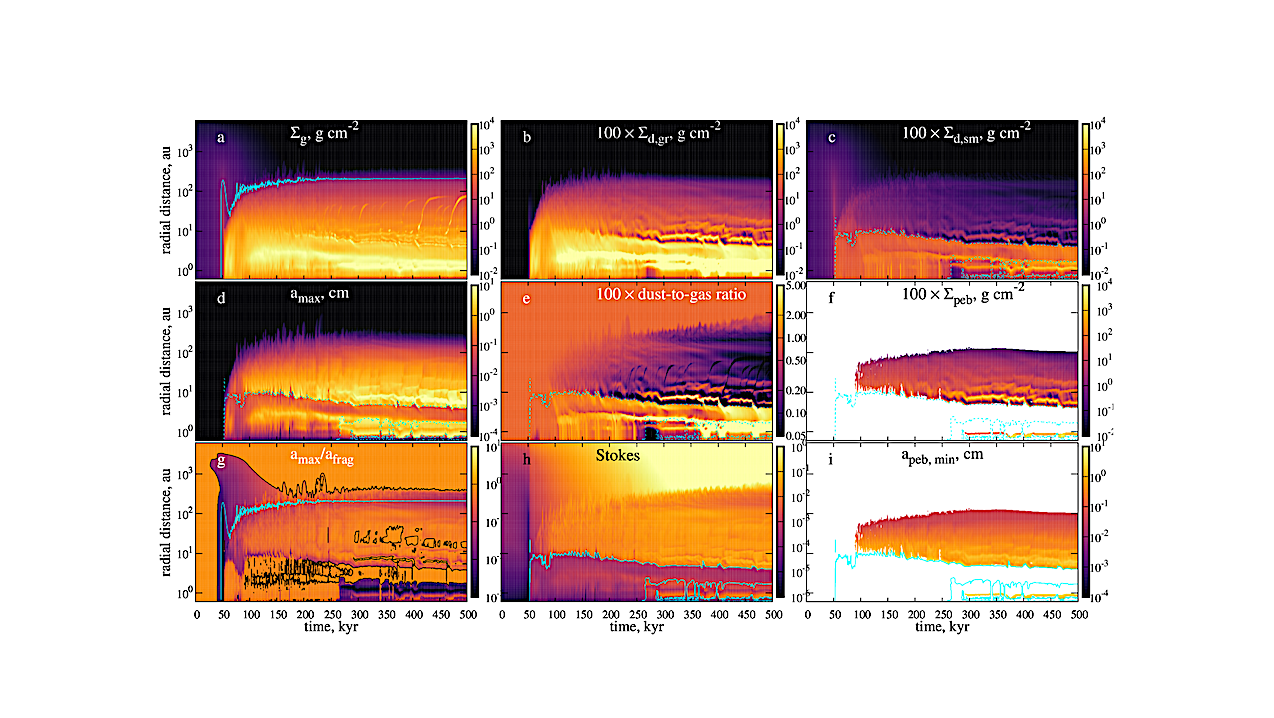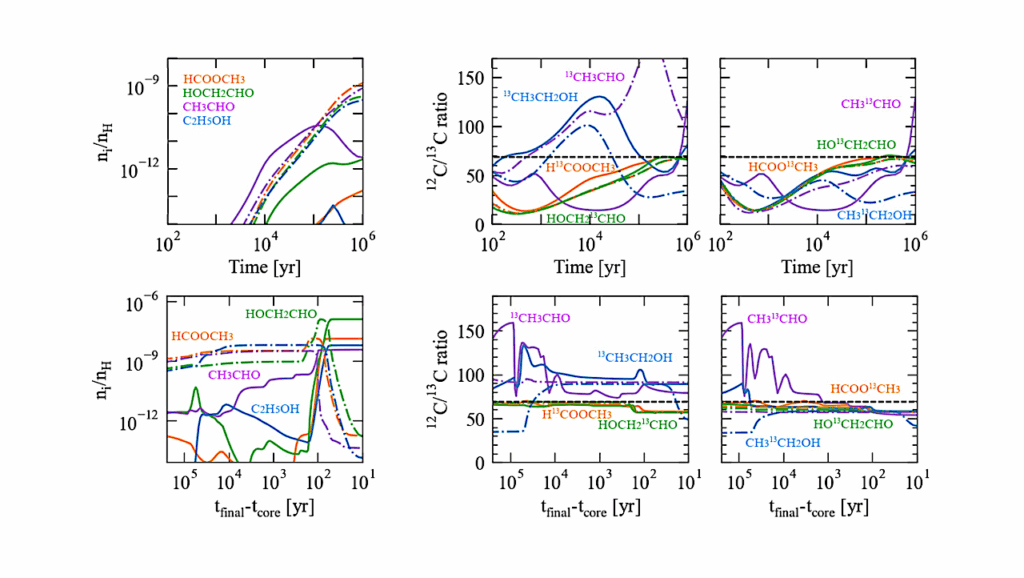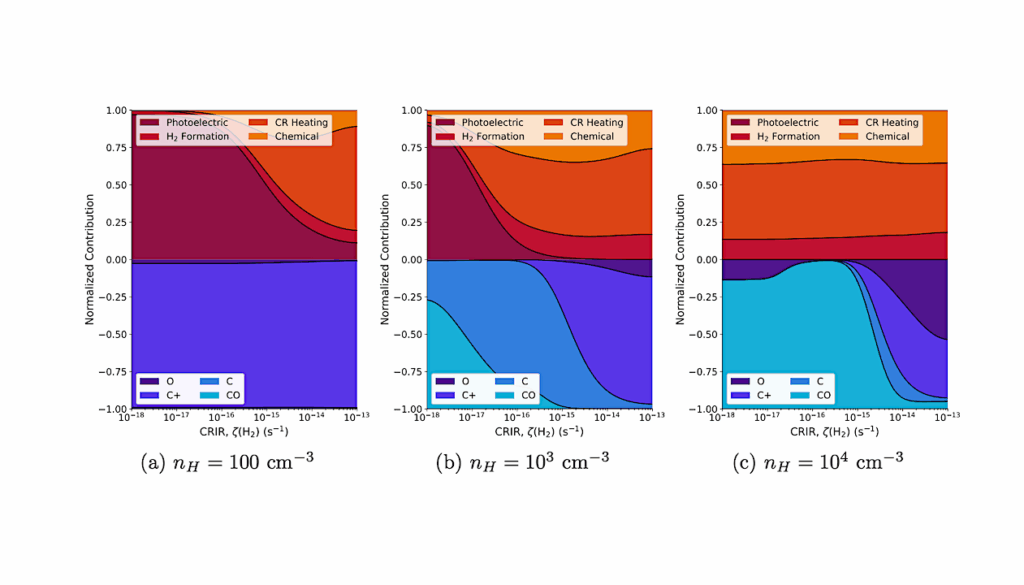Ices On Pebbles In Protoplanetary Discs

The formation of solid macroscopic grains (pebbles) in protoplanetary discs is the first step toward planet formation. We aim to study the distribution of pebbles and the chemical composition of their ice mantles in a young protoplanetary disc.
We use the two-dimensional hydrodynamical code FEOSAD in the thin-disc approximation, which is designed to model the global evolution of a self-gravitating viscous protoplanetary disc taking into account dust coagulation and fragmentation, thermal balance, and phase transitions and transport of the main volatiles (H2O, CO2, CH4 and CO), which can reside in the gas, on small dust (<1 μm), on grown dust (>1 μm) and on pebbles.
We model the dynamics of the protoplanetary disc from the cloud collapse to the 500 kyr moment. We determine the spatial distribution of pebbles and composition of their ice mantles and estimate the mass of volatiles on pebbles, grown dust and small dust. We show that pebbles form as early as 50 kyr after the disc formation and exist until the end of simulation (500 kyr), providing prerequisites for planet formation. All pebbles formed in the model are covered by icy mantles.
Using a model considering accretion and desorption of volatiles onto dust/pebbles, we find that the ice mantles on pebbles consist mainly of H2O and CO2, and are carbon-depleted compared to gas and ices on small and grown dust, which contain more CO and CH4. This suggests a possible dominance of oxygen in the composition of planets formed from pebbles under these conditions.
A. Topchieva, T. Molyarova, V. Akimkin, L. Maksimova, E. Vorobyov
Comments: 18 pages, 9 figures, 1 table, accepted to MNRAS
Subjects: Earth and Planetary Astrophysics (astro-ph.EP); Solar and Stellar Astrophysics (astro-ph.SR)
Cite as: arXiv:2403.02895 [astro-ph.EP] (or arXiv:2403.02895v1 [astro-ph.EP] for this version)
Submission history
From: Anastasiia Topchieva
[v1] Tue, 5 Mar 2024 12:01:34 UTC (19,731 KB)
https://arxiv.org/abs/2403.02895
Astrobiology, Astrochemistry, Astrogeology,








